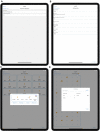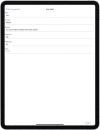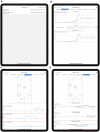Design of a sensor network for the quantitative analysis of sport climbing
- PMID: 36891129
- PMCID: PMC9986317
- DOI: 10.3389/fspor.2023.1114539
Design of a sensor network for the quantitative analysis of sport climbing
Abstract
We describe the design of a modular sensorized climbing wall for motion analysis in a naturalistic environment. The wall is equipped with force sensors to measure interaction forces between the athlete and the wall, which can be used by experienced instructors, athletes, or therapists, to gain insights into the quality of motion. A specifically designed triaxial load cell is integrated into each hold placement, invisible to the climber, and compatible with standard climbing holds. Data collected through the sensors is sent to an app running on a portable device. The wall can be adapted to different uses. To validate our design, we recorded a repeated climbing activity of eleven climbers with varying degrees of expertise. Analysis of the interaction forces during the exercise demonstrates that the sensor network design can provide valuable information to track and analyze exercise performance changes over time. Here we report the design process as well as the validation and testing of the sensorized climbing wall.
Keywords: instrumented climbing hold; motion analysis; performance; sensors; sport climbing.
© 2023 Colombo, Maj, Canina, Fedeli, Dozio and Ferrise.
Conflict of interest statement
The authors declare that the research was conducted in the absence of any commercial or financial relationships that could be construed as a potential conflict of interest.
Figures










References
-
- Cook E. Percentage baseball. Massachussets (USA): MIT Press; (1964).
-
- Lightman K. Silicon gets sporty. IEEE Spectr. (2016) 53:48–53. 10.1109/MSPEC.2016.7420400 - DOI
-
- Sharma A, Al-Dala’in T, Alsadoon G, Alwan A. Use of wearable technologies for analysis of activity recognition for sports. 2020 5th International Conference on Innovative Technologies in Intelligent Systems, Industrial Applications (CITISIA). IEEE (2020).
-
- Kos A, Wei Y, Tomažič S, Umek A. The role of science, technology in sport. Procedia Comput Sci. (2018) 129:489–95. 2017 International Conference on Identification, Information, Knowledge in the Internet of Things. 10.1016/j.procs.2018.03.029 - DOI
LinkOut - more resources
Full Text Sources

